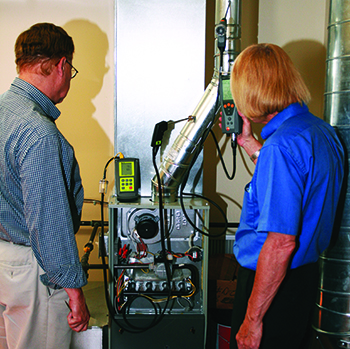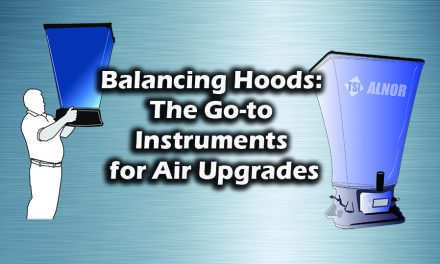What About Induced Draft Furnaces?
Based on the formula above and proper airflow, the ΔT of these furnaces should be about 60 to 70°F. Because of the extended heat exchanger surface, they do have a lower flue temperature. The flue temperature range of these furnaces is between 300 and 400°F.
When the flue temperature is below 300°F, the furnace is under-firing (chills) and not delivering its rated capacity 100% of the time. Temperatures above 400°F(fever) are caused by poor airflow, over-firing, or a dirty heat exchanger.
What About a Two-Stage Induced Draft Furnace?
Low fire is a built-in under-fired condition, and you should expect lower flue temperatures. However, because the blower speed is also adjusted, the ΔT should still be 60 to 70°F. The problem with operating in low fire with lower flue temperatures is that it dramatically increases the likelihood of condensation. The material used for the flue will not make any difference except in how fast the flue deteriorates. Never should a flue temperature in a non-condensing furnace drop below 250°F (chills).
Condensing furnaces have the lowest flue temperature. They should have a 60 to 70°F rise when delivering their rated Btus. The flue temperature range on these would typically be between 100 to 140°F. Anything below 100°F (chills) and over 140°F (fever) is problematic. On older condensing furnaces, measuring 120 to 140°F is more likely than on newer ones, where it is sometimes hard to get to 100 degrees.
I look at the secondary chamber on condensing furnaces in the same way I do a fin-tube radiator. We are blowing 70°F air across it at a good velocity. Would a secondary chamber that is 90° or one that is 110°F have a better transfer rate? Unfortunately, we must deal with what the equipment is capable of doing.

What About Boilers?
Boilers can make hot water or steam. Temperatures of hot water boilers can range from 120 to 200°F. Residential to commercial steam boilers can have steam temperatures from 215 to well over 300°F. Of course, they can’t have the same flue temperature with different water temperatures. Again, the flue temperatures can’t be the same for all temperatures of steam.
Because of the different temperatures of the water or steam, there needs to be a floating range for flue temperatures. On conventional water or steam natural draft boilers, we use a flue temperature range of 270 to 370°F higher than the outlet water or steam temperature.
So, if the outlet water temperature is 160°F, the minimum flue temperature should be 430°F. If the temperature is lower (chills), the boiler is underfired. If the temperature is higher (fever), it is either overfired, has poor pump flow, or is dirty (scale).
This article aims to help make technicians aware of the field-acquired operating parameters – when it comes to flue temperatures – that are needed to allow equipment to perform as rated. This is only one measurement, but it is never listed in the manufacturers’ specifications.
There is so much more to this – I could write a class about it. Wait!! We did, and it’s called Combustion Efficiency and Carbon Monoxide Diagnostic Certification!! Learn more about this here: ncilink.com/COTest.













Recent Comments